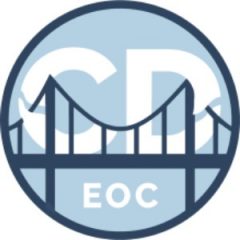The Chelan-Douglas Health District has identified the following ways for our community to band together and help during this time of need.
Homemade Face Masks & Gowns
Donating Personal Protective Equipment
I Can Help Initiative Door Hangers & Postcards
Statement from the Chelan-Douglas Health District
April 3, 2020
Cloth Face Masks & Gowns
Personal Protective Equipment (PPE)
All of us involved in the COVID-19 response know that protecting our health workers and first responders is vital for each and every one of us. That is why our limited supplies of commercial Personal Protective Equipment (PPE) have been reserved for them. But some of the rest of us would feel more comfortable using some kind of masks in everyday life. Here is some advice on that.
The scientific evidence of PPE’s value in health care is firm. The scientific evidence on masking by the general public is not so clear. One downside of public masking is the idea that masks might make us feel too safe, and reduce our attention to handwashing, surface cleaning, social distancing, and other critical measures. So public health authorities are generally not urging (much less ordering) everyone to wear masks whenever they are out of their home, but it might provide a little additional protection so long as those other measures are not neglected. And for people with symptoms, a mask might reduce transmission to others.
Until supplies of commercially made masks are available, members of the public who want masks should be using homemade ones. These can be just as effective at stopping infective droplets as surgical masks. (N95 masks are used by health care workers because they are protective for finer particles, but even in health care, these masks are not required most of the time.) Masks with three layers of cotton material will work. They can have elastic ear loops or ties that go around the back of the head.
If you aren’t able to sew a mask, you can use something such as a cotton scarf or bandana folded into three layers that will cover your nose and mouth and tied behind your head. This will work, too. You probably won’t be able to purchase already manufactured masks at this time – they are going to health workers and first responders only during the shortage. But material to make masks is still available, in some cases from local stores but also on-line from Amazon and others. And, Youtube.com has lots of
good videos about how to be creative with materials you have at home to create a face mask.
The Governor is asking Washington State manufacturing businesses to help in this effort, and the prospects are good that thousands of masks can be made available quickly. In the meantime, you will need to make or adapt your own face covering.
But here’s a caution. Once you have worn one for a while – certainly after a day’s use – be careful when removing it not to touch its outside surface. That’s where the virus will be if the mask is actually helping. Wash those used masks in hot water and dry them on high heat – that will kill the virus. And if you have a collection of used masks, treat them as contaminated by carefully dropping them into a sealable plastic bag until you can carefully dump them into a washing machine. Then throw the bag in a garbage can. In
health care, we know that taking off PPE carelessly is as risky as wearing it incorrectly, so use special care when you have finished with the mask. Of course, used gowns should be treated with the same caution as used masks.
Sewing patterns for masks, and also for gowns which you might want to wear if taking care of a sick relative, can be found online at these locations:
https://www.confluencehealth.org/covid19-donations/
(See video link at right of page.)
https://www.joann.com/make-to-give-response/
http://www.fabricpatch.net/face-masks-for-covid-19-relief.htm
https://media.rainpos.com/220/quick_hospital_gown_1.pdf
For more information, contact [email protected]
